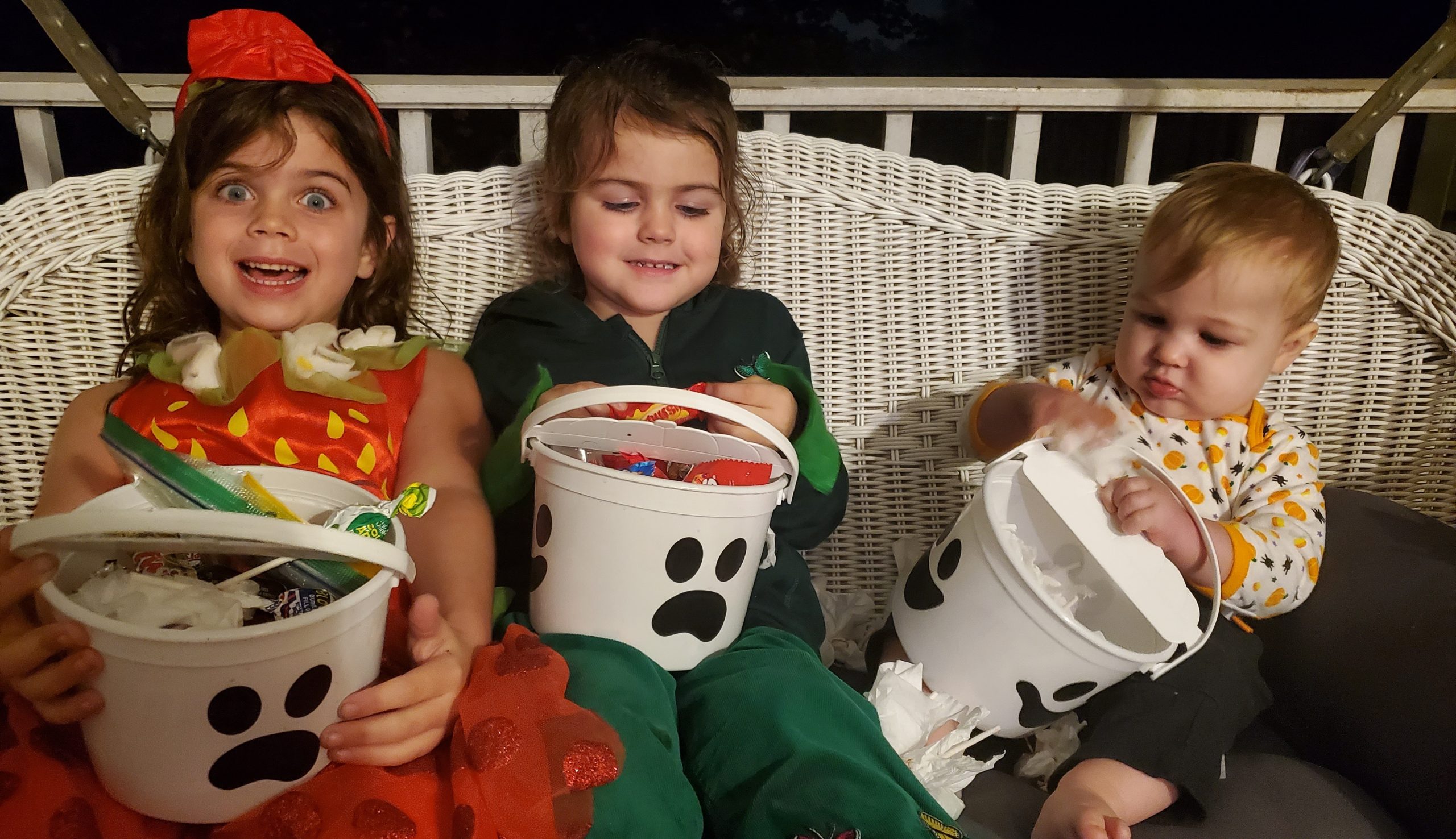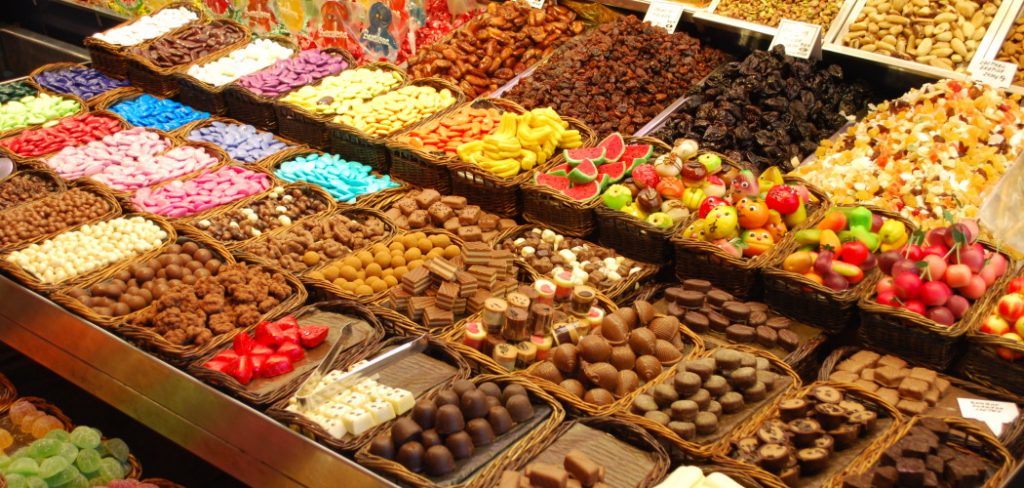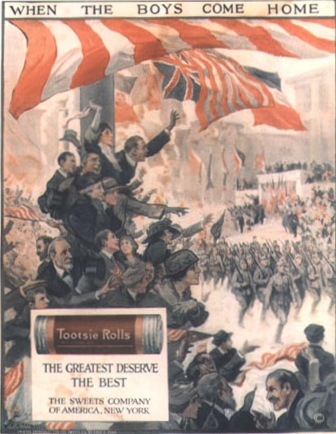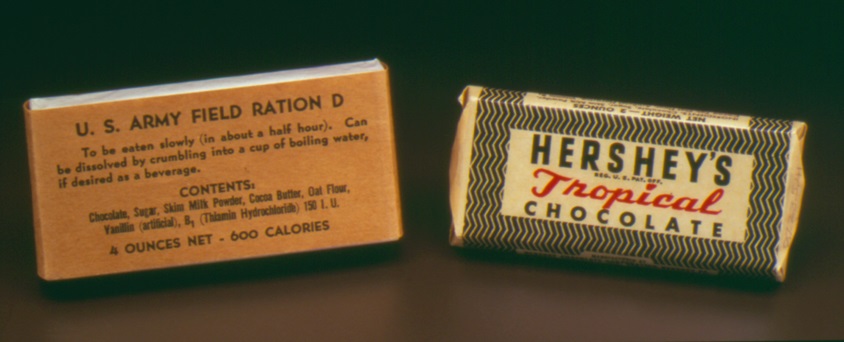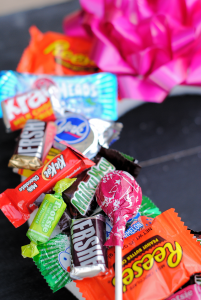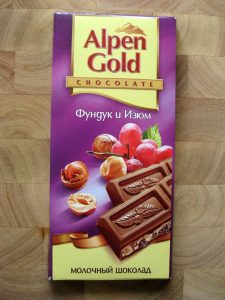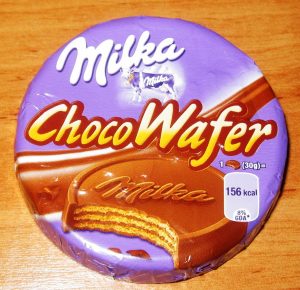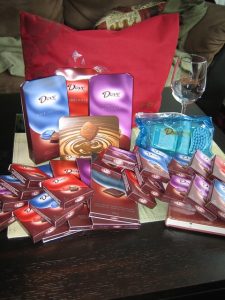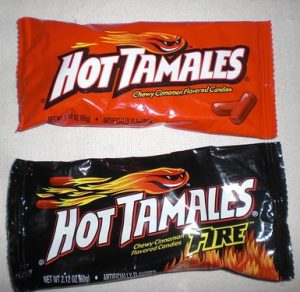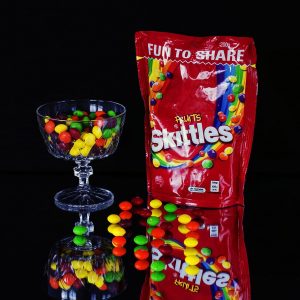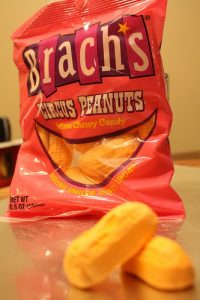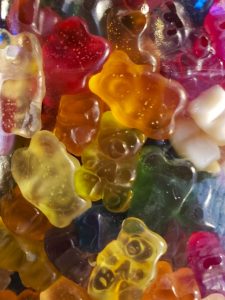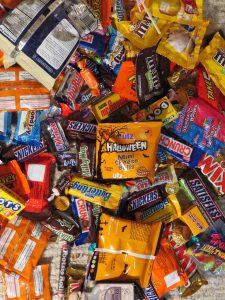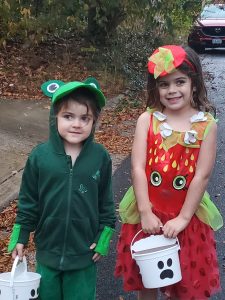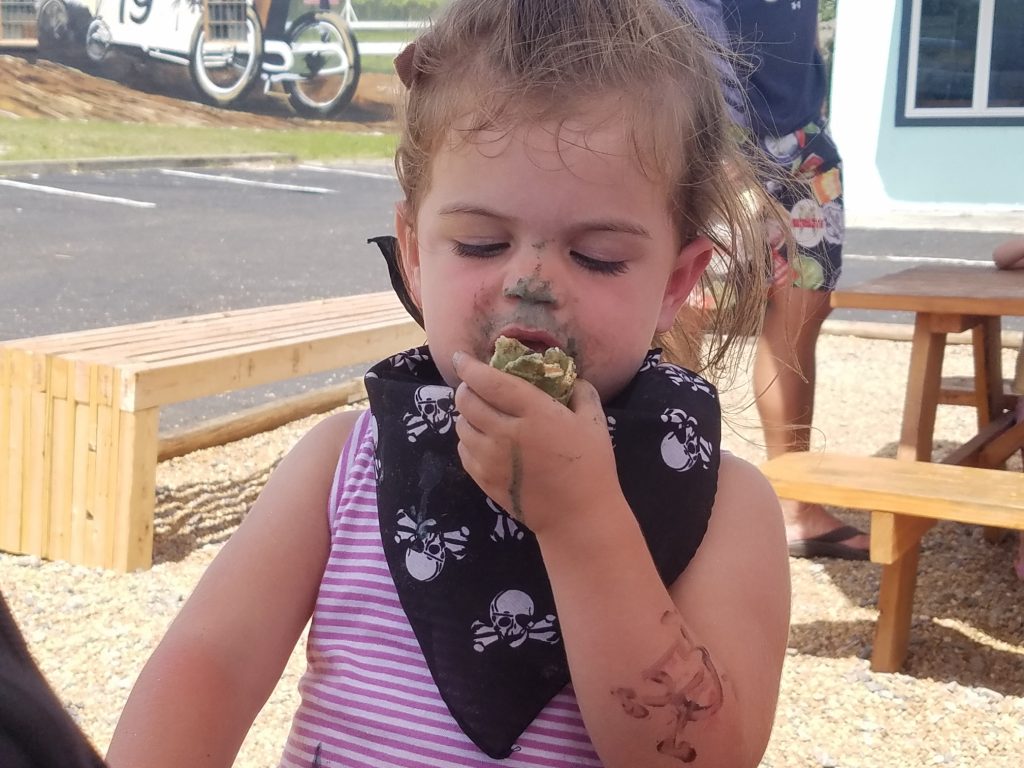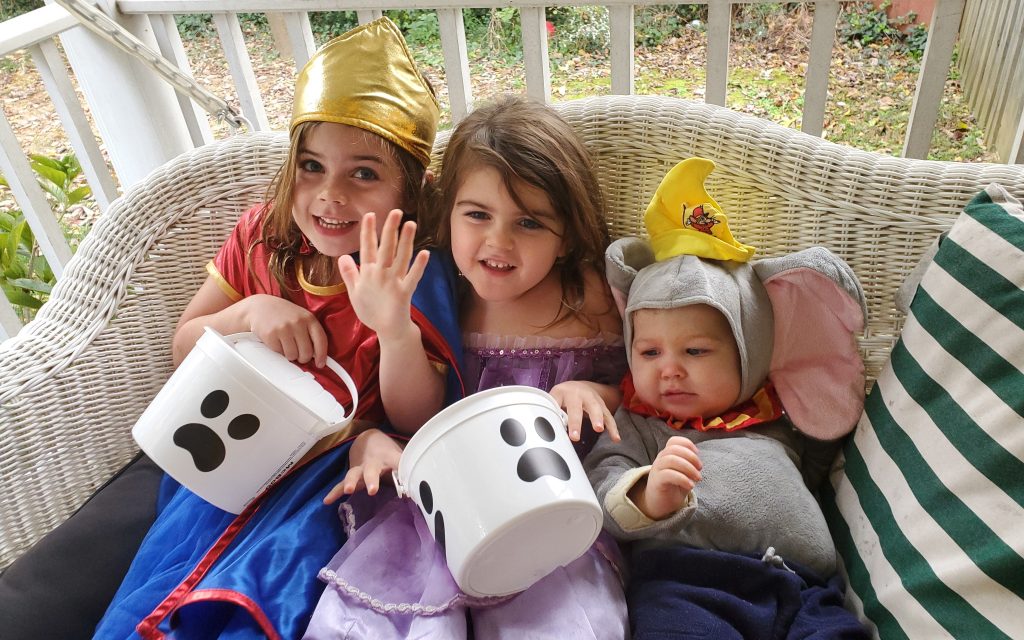We’ve just celebrated the biggest candy month of the year! The day of the year with the most candy sales is October 28th. And of all the 365 days in the year, the top five candy selling days are all in October.
Just How Sweet Is It?
- Over 10% of annual candy sales happen the days leading up to Halloween — that is nearly $2 billion dollars in sales.
- Chocolate is the preferred choice of sweets for many. Of the $1.9 billion sold in Halloween candy each year, $1.2 billion was for chocolate candy and only $680 million for sugar candy.
- Consumers buy an incredible 90 million pounds of chocolate candy during Halloween week, giving it a strong lead compared to other holidays. Almost 65 million pounds is sold during the week leading up to Easter but only 48 million pounds during Valentine’s week
- The average American household spends $44 a year on Halloween candy.
- Americans purchase nearly 600 million pounds of candy a year for Halloween.
- These “facts” popped up during multiple searches about candy. Could all of these “facts” be true? I don’t know. But without vouching for truthfulness or accuracy, I hereby present candy info from across the web.
When Thinking Halloween, Candy Corn Comes to Mind
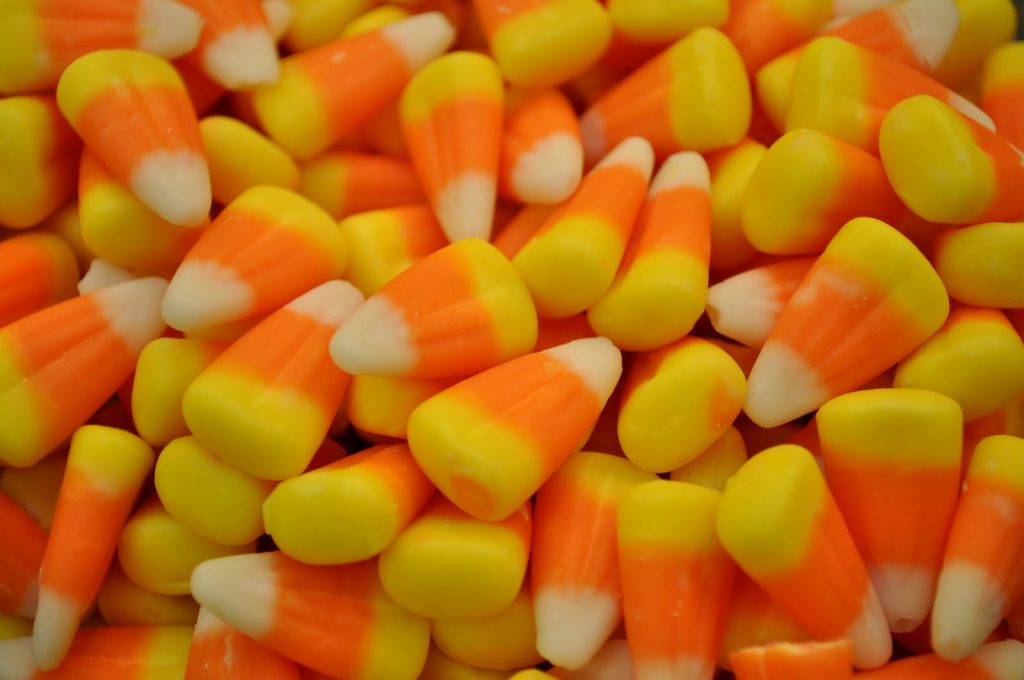
- The Wunderle Candy Company first produced candy corn in 1888, but they called it “chicken feed.”
- Americans purchase over 20 million pounds of candy corn a year. With that said, it’s unlikely that every last one of those millions of candies was actually consumed. For one thing, it is the most hated Halloween candy of all. (See below)
- After the beloved and beleaguered candy corn, the leading best sellers are as follows: Snickers, Reese’s, Kit Kats, and M&Ms.
- Candy corn is the most searched-for candy term in Google — more popular than candy apples, gummy worms, and candy pumpkins.
Looking Beyond October
- Candy, at its simplest, is the result of dissolving sugar in water. The different heating levels determine the types of candy: Hot temperatures make hard candy, medium heat will make soft candy, and cool temperatures make chewy candy.
- In Europe during the middle ages, the high cost of sugar made sugar candy a delicacy available only to the wealthy.
- About 65% of American candy bars were introduced more than 50 years ago.
- The actual flavor of circus “peanuts” is banana.
- Gummy worms first appeared on July 15, 1981, the 50th anniversary of gummy bears.
- U.S. chocolate manufacturers currently use 40 percent of the almonds produced in the United States and 25 percent of domestic peanut.
- Fairy Floss was the original name of cotton candy. William Morrison, a dentist, invented it. In the United States, National Cotton Candy Day is celebrated on November 7th.
- Americans over 18 years of age consume 65 percent of the candy produced each year.
- Frank and Ethel Mars, who created the Snickers candy bar in 1929, named it after the family horse.
- Retailers sell more than 36 million heart-shaped boxes of chocolate every year for Valentine’s Day.
- In the 1800’s, physicians commonly advised their broken-hearted patients to eat chocolate to calm their pining.
Not A New Thing
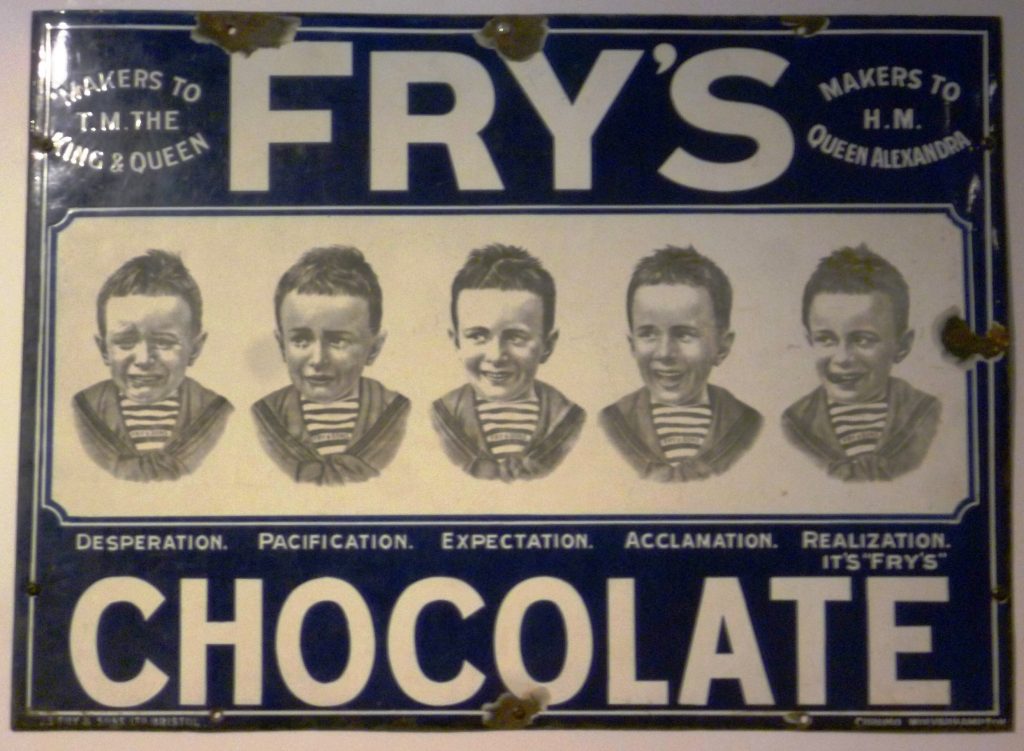
- Fry’s Chocolate Cream: Candy as we know it today, was first recorded in 1847. This can be considered the first candy ever made and sold officially on the market. The candy was created by Joseph Fry. He used bittersweet chocolate. Today, Cadbury manufactures this “Rich dark chocolate with a smooth fondant center.”
- Good & Plenty is believed to be the oldest candy brand in the USA. The pink-and-white capsule-shaped chewy licorice was first produced in 1893 in Philadelphia. It’s still found at concession stands everywhere, which makes Good & Plenty a treat that can be enjoyed by candy lovers of all ages.
- Dryden & Palmer dates back to 1880 when rock candy enjoyed great popularity as a cough-cold remedy and delicious confection. Every bar and saloon had its own creation of rock candy dissolved in rye whisky to “cure their patrons’ colds” or at least make them forget they had a cold in the first place. Prohibition hit the rock candy industry hard and, of the original manufacturers, only Dryden & Palmer remains today.
- John Ross Edmiston may have been the accidental creator of saltwater taffy in Atlantic City in 1883. His jokingly offered “saltwater taffy” to customers after his boardwalk shop was flooded, soaking his taffy stock with salt water.
- Tootsie Rolls debuted in 1896, introduced by Leo Hirshfield of New York who named them after his daughter’s nickname, “Tootsie”.
- The War Office added Tootsie Rolls to soldiers’ rations during World War II due to their durability in all weather conditions.
- According to USMC apocrypha, marines used Tootsie Rolls as emergency first aid to plug bullet holes during the Korean War.
- In the 1940s and 1950s, “Captain Tootsie” fought crime with his sidekick Rolo in a daily ad comic strip.
- Milton Hershey of Lancaster, PA introduced the first Hershey milk chocolate bar in 1900. Hershey’s Kisses appeared in their familiar foil wraps in 1906.
- NECCO wafers are pastel-colored candy disks that first appeared in 1901, named for the acronym of the New England Confectionery Company.
- Baby Ruth candy bars were first sold in 1920, named for President Grover Cleveland’s daughter – not the famous baseball player.
- Milky Way Bar is the first of many candies to be introduced by the Mars family in 1923. It was created to taste like a malted milk that would be available anywhere, anytime. One of the earliest advertisements for Milky Way listed “sunlight and fresh air” as primary ingredients.
- M&M/Mars introduced the Snickers Bar in 1930. It is the number-one selling candy bar in the U.S. today.
- M&M/Mars debuted the 3 Musketeers Bar in 1932. It was originally made as a three-flavor bar featuring chocolate, vanilla and strawberry nougat. In 1945, M&M/Mars changed to making them with only chocolate nougat.
- Soldiers’ rations in the Spanish Civil War inspired Forrest Mars, Sr to create M&Ms: plain chocolate candies in a shell of hard sugar.
- Mars joined Bruce Murrie (son of Hershey executive William Murrie) to produce M&Ms in 1941, marketing them as durable in response to slack chocolate sales in summer.
- During World War II, M&Ms were sold exclusively to the US military because of their durability.
- They were the first candies to go into space, sent with the crew of the NASA shuttle Columbia in 1981.
- Hershey’s had an exclusive contract with the American military to supply chocolate for soldiers’ rations during World War II.
- They specifically created the D-Ration Bar to “taste a little better than a boiled potato” to discourage soldiers from eating only their chocolate ration and nothing else.
- The recipe for these emergency chocolate rations made a viscous liquid so thick that it clogged the regular manufacturing machines and had to be packed into molds by hand.
- Hershey produced a Tropical D-Ration specifically designed to withstand the high temperatures in the Pacific Theater.
- Multiple sources claim to be the creators of Skittles, including the Wrigley’s candy company and a nebulous British man named Skittle. Today, 200 million Skittles are produced each day.
- Sugar Daddies, the caramel lollipops, were originally called Papa Suckers.
- Dum Dums “mystery” flavor is always a mix of two flavors. The machine creates them when it switches to producing a new flavor.
- Reese’s Peanut Butter Cups are the No. 1 selling candy brand in the United States, consisting of white fudge, milk, or dark chocolate cups filled with peanut butter. H.B. Reese invented them in 1928 after he founded the H.B. Reese Candy Company in 1923.
Most Popular Candy by Country
- US and Canada: Kit Kats and Reese’s Peanut Butter Cups
- Mexico and Brazil: Lacta
- Chile: Ambrosoli
- South Africa: Cadbury Lunch Bar
- UK, Ireland, Australia, and India: Cadbury Dairy Milk
- Iceland: Prince Polo
- France: Les Fraises Tagada
- Denmark: Haribo
- Belgium: Côte d’Or
- Germany: Milka (Germans consume twice as much candy as Americans)
- Poland: Ptasie Mleczko
- Turkey: Ülker
- Saudi Arabia: Galaxy.
- Israel: Elite
- Russia and Aberbaijan: Alpen Gold
- China: Dove Chocolate or Milk Candy, depending on the source
- Japan: Meiji chocolate
- South Korea: Ghana chocolate
- Thailand: Kit Kat
What is the Best Candy?
According to Blog.galvanize.com, we can’t identify the “best candy” (that’s far too subjective), but we can rank categories of candy.
Best-selling Candy in the World
- Snickers
- Reese’s Peanut Butter Cups
- Toblerone
- Kit Kat
- Dove
- Cadbury Dairy Milk
- Twix
- Milka
- 3 Musketeers
- Hershey Bar
Best-selling Candy in the United States
- M&Ms
- Reese’s Peanut Butter Cups
- Hershey Bar
- Snickers
- Kit Kat
- Twix
- Twizzlers
- Skittles
- Dove Bar
- 3 Musketeers
Best-selling Candy at Halloween in the United States 2020
- Skittles
- Reese’s Peanut Butter Cups
- Starburst
- M&Ms
- Hot Tamales
- Candy Corn
- Snickers
- Sour Patch Kids
- Hershey’s Kisses
- Jolly Ranchers
Most Popular Halloween Candies by U.S. Kids Under 17
- Hershey Bar
- Reese’s Peanut Butter Cups
- Kit Kat
- Snickers
- M&Ms
- Skittles
- Twix
- Starburst
- Sour Patch Kids
- Jolly Ranchers
Most Hated Halloween Candy in the United States
- Candy Corn
- Peanut Butter Kisses
- Circus Peanuts
- Wax Coke Bottles
- Smarties
- NECCO Wafers
- Tootsie Rolls
- Mary Janes
- Good & Plenty
- Licorice
Most Popular Candy in the United States (not always the same as the best-selling candy)
- Reese’s Peanut Butter Cups
- Twix
- Snickers
- Peanut M&Ms
- Gummi Bears
- M&Ms
- Butterfinger
- Kit Kat
- Almond Joy
- Sour Patch Kids
Most Popular Candy Bars in the United States
- M&Ms
- Reese’s Peanut Butter Cups
- Snickers
- Hersey Bar
- Kit Kat
- Oh Henry!
- Baby Ruth
- 3 Musketeers
- Milky Way
- Butterfinger
Important Dates for Candy Lovers
- 1/8 National English Toffee Day
- 1/26 National Peanut Brittle Day
- 2/1 Decorating with Candy Day
- 2/8 Molasses Bar Day
- 2/11 National Peppermint Patty Day
- 2/15 National Gumdrop Day
- 2/15 National I Want Butterscotch Day
- 2/23 Tootsie Roll Day
- 2/25 National Chocolate Covered Nut Day
- 3/8 National Peanut Cluster Day
- 3/26 National Nougat Day
- 4/5 National Caramel Day
- 4/5 Peeps Day
- 4/12 National Licorice Day
- 4/22 National Jelly Bean Day
- 5/4 National Candied Orange Peel Day
- 5/25 National Taffy Day
- 6/1 National Candy Month
- 7/7 National Chocolate Day
- 7/18 National Sour Candy Day
- 7/20 National Lollipop Day
- 9/14 Gobstopper Day
- 10/13 National M&M Day
- 10/30 National Candy Corn Day
- 10/31 National Caramel Apple Day
- 11/4 National Candy Day
- 11/7 National Bittersweet Chocolate with Almonds Day
- 12/7 National Cotton Candy Day
- 12/19 National Hard Candy Day
- 12/26 National Candy Cane Day
- 12/28 National Chocolate Candy Day
What Candy Does to Your Body
- Less than two percent of the calories in the American diet come from candy.
- A one-ounce piece of milk chocolate contains about the same amount of caffeine as a cup of decaffeinated coffee.
- When we eat sweet foods, we activate the brain’s reward system — called the mesolimbic dopamine system. Dopamine is a brain chemical released by neurons and can signal that an event was positive. When the reward system fires, it reinforces behaviors — making it more likely for us to carry out these actions again.
- The recommended dose of candy is just two to three pieces of candy a day.
- While eating too much candy in one sitting can do a number on your blood sugar and your teeth, it’s true that occasional excess probably won’t do major lasting harm. In the long-term, however, repeated indulgence in high-sugar foods can increase your risk for a number of health problems.
- The effects of added sugar intake — higher blood pressure, inflammation, weight gain, diabetes, and fatty liver disease — are all linked to an increased risk for heart attack and stroke,
- Candy has some physical health benefits: Decreasing your risk of stroke and heart attack — Dark chocolate is rich in antioxidant flavonoids, which are healthy for your heart. Regularly eating this rich treat can decrease your risk of stroke and heart attack by 39 percent.
- Chocolate has been shown to improve depression and anxiety symptoms and to help enhance feelings of calmness and contentedness. Both the flavanols and methylxanthines are believed to play a role in chocolate’s mood-enhancing effects.
- Chocolate can’t replace traditional treatment options for depressive feelings with mood disorders, but science may support its role in your diet. Approximately 70% of people in a cross-sectional survey were less likely to report depressive symptoms if they’d eaten dark chocolate within the last 24 hours.
BOTTOM LINE: Some ways good, some ways bad, always sweet!
